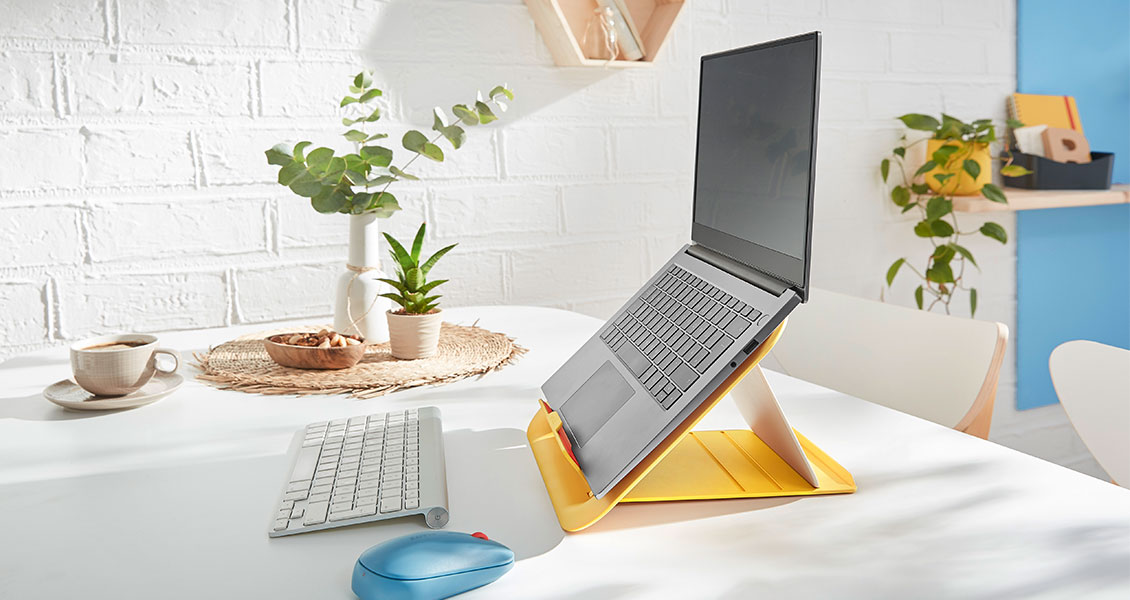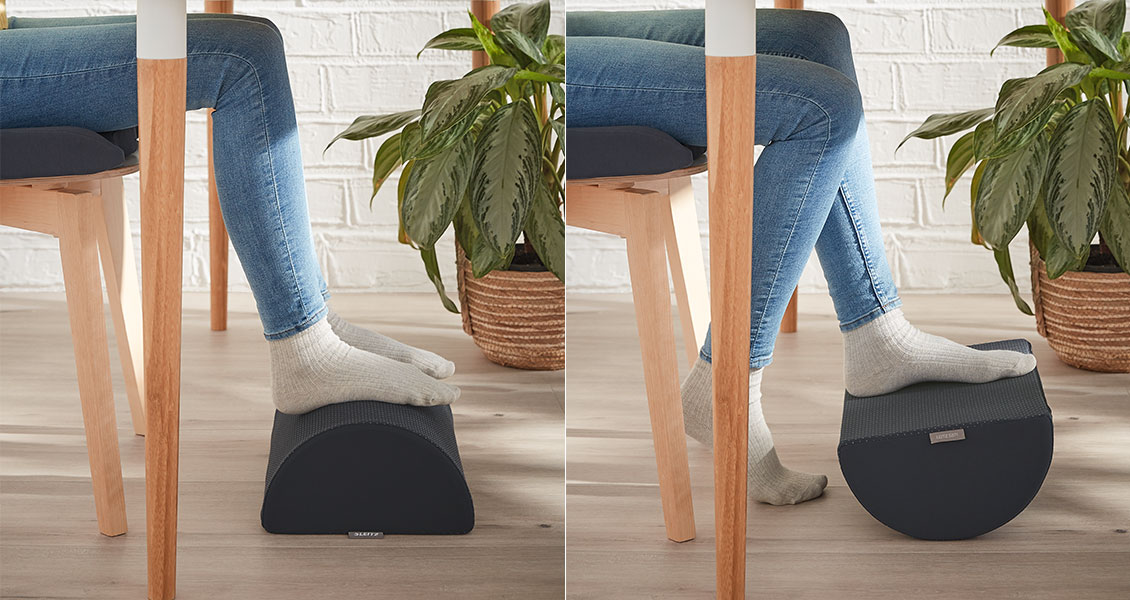Can Hot Desking Benefit Your Company?
04.05.2022

Over the past few years, employee wellbeing has been brought to the forefront of working practices. There has been more focus on creating flexible working schedules, to give the employee more autonomy and freedom to make their work fit around their personal life.
With this, there has been a rise in remote working, hybrid working, and flexible working hours. And as part of these flexible working policies, hot desking has also become more popular. But what exactly is hot desking, and can it be of benefit to your company?
What is Hot Desking?
Whilst hot desking has risen in popularity in recent years, it is a practice that has been around for decades. When a company implements hot desking, the employees won’t have one assigned, permanent workstation. Instead, they will share desks, either booking specific workstations or choosing one on the day they arrive in the office.
Benefits of Hot Desking
Collaboration
Hot desking can help to create a more collaborative culture in the workplace. In a traditional office, individuals and teams can become isolated and cut off from the rest of the workforce. But with hot desking, people have an opportunity to move around the office, sitting and working with people they might not have otherwise interacted with. This can lead to more creative ideas, more innovation, and better productivity.
Communication
Hot desking can lead to better communication amongst the workforce. When people are more agile, and more used to moving around the office, they’ll be more likely to speak to other employees in person. This can mean better conversations compared to sending an email or instant message. Face-to-face communication can be more effective and quicker to reach a resolution and avoids any issues about nuances getting lost in translation through written communication.
Hot desking can also mean that people will get to know other employees that they might not have otherwise had an opportunity to talk to. Overall, this better communication can lead to a happier and more amiable workforce, and also result in increased productivity.

Tidy Workspaces
Hot desking can result in tidier workspaces. When an employee knows they will be moving desks the next day, they won’t let clutter and paperwork build up on their desk. Instead, people will need to keep a tidy and organised workstation. This can in turn lead to people working more productively and efficiently, as they won’t have the distractions that come with a cluttered desk. A tidy workspace will mean people can focus better on their work and keep organised.
It’s important that the company provide the right equipment to help employees keep their workspace tidy. A storage carry box provides a solution for individuals to keep their equipment, such as their office tools, pens and notepad, together in one place. The practical handle on our Leitz Cosy storage carry box means it can be conveniently transported from one desk to another, making it ideal for hot desking.
Flexibility for Employees
As more companies adopt flexible working policies, hot desking can help remote workers to participate in office culture more easily. It may be that certain employees will predominantly work remotely but may want to come into the office from time to time. A traditional office where everyone has a permanent desk might mean that there is no extra space available for remote workers to use. But having a hot desk policy means that there will be a space available in the office for these workers, should they require it. This can help them to feel more part of the team, as well as giving them an opportunity to collaborate and communicate better with the team.
Hot desking can also encourage more mobile and remote working, as the requirement for individuals to always be at their assigned desk is removed. This can lead to better employee wellbeing as they can utilise more flexible working to achieve a better work/life balance.
Cost Effective
Wasted space means wasted money. With more businesses adopting hybrid work practices, a company is now unlikely to have the full workforce in the office at one time. This means that large offices are seeing desks empty on a regular basis. Hot desking means that companies can downsize their offices and save money on renting large buildings that are half empty. Companies can find a capacity that works for them – whether that’s having space for 50% of the workforce to be in the office at once, or 60%, or 80%.
It can also be cost-effective for companies to implement hot desking when they have employees working roles that require them to routinely attend meetings or appointments out of the office. Their role might require them to be in the office some of the time to complete certain tasks or paperwork – hot desking means that a company won’t waste space assigning permanent desks to people who spend a large period of time working outside the office.
Disadvantages of Hot Desking
Cleaning Policies
Hot desking will require more stringent cleaning policies. Especially during the pandemic, it’s essential that workstations are cleaned and sanitised between each user. The company will need to communicate who will be responsible for this, whether it will be a cleaning team who will sanitise all workstations at the end of every day or the individual who has used the desk. The right equipment and cleaning products will need to be provided and training given.
As well as pandemic-related cleaning, individuals will also need to keep their workstations generally clean and tidy so they’re ready for the next user. A company might need to set out guidelines for resetting the desk, such as putting equipment back where it belongs, removing any rubbish, and cleaning up any crumbs or food spillages. If individuals slack on cleaning the workstation when they are finished, it could create animosity amongst the workforce.
Disruption
Some employees will prefer to have their own personal workstation that they can set up exactly how they want it. Moving desks every day can therefore cause them disruption as they have to adapt to a new workstation or take time to set up their desk in the right way for them. Working at a new desk every day can disrupt employees’ routines and it can take a while to adjust to working in a new environment or around new people.
Ergonomic Requirements
Each individual will have different requirements for their correct ergonomic workstation. This will involve the best ergonomic office chairs for their needs, the position of the screen and keyboard, and the height of the desk. When people are constantly working at different desks, they could find that the equipment and screens aren’t set up correctly for their ideal ergonomics, leading to headaches at work and other workplace injuries, like muscle strains.

The solution is to use adaptable workstation ergonomics. An adjustable laptop stand or adjustable monitor stand at each desk will allow employees to place their screens at the right height for their needs. Companies could also provide seat cushions and foot rests to individuals to use at desks so they can create a comfortable workspace at each desk they work at. Considering the ergonomic design of workstations and allowing them to be adaptable for each individual can help to prevent the aches and pains that can arise from incorrect desk ergonomics.

IT Requirements
Hot desking might require companies to change their IT provisions. If you had previously worked with tower PCs, you might need to provide employees with laptops to make it easier to move around the office. Along with this, you will need to have the right resources in place to allow people to easily connect to the network from each workstation. If people are using phones for their role, you might need to find a solution to providing a ‘roaming’ phone that’s connected to their laptop, so they can keep their specific number but be contactable wherever they’re working from.
You might also need to find software to organise hot desking, such as allowing people to book desks and recording where people are working on specific days so other employees can find them.
Will Hot Desking Work for Your Company?
Hot desking can bring many benefits to a business, but it won’t be suitable for everyone. It’s important to communicate with your employees before you adopt hot desking to determine what they think would work for them. It might be that you trial hot desking with one team first, and then either extend it to the entire company if it’s a success or scale it back if problems arise. It may be that certain roles within your company, such as more technical positions that require a more complicated workstation setup, will require a permanent desk. However, it might still be beneficial to allow other, more flexible roles to adopt hot desking – the same policy might not need to be applied to every single employee.
If you trial hot desking with your team, you should be flexible, open, and ensure good communication throughout. The aim of hot desking is to improve collaboration and productivity, so be sure to solicit regular feedback to establish if this is working as it should.
Leitz has a range of stylish and practical office products to help keep your workplace organised and productive.
Read more about ways to improve productivity in your office and look after employee wellbeing:
Do the Aesthetics of Your Workplace Affect Productivity?
Should Companies Consider a Shorter Working Week?
10 Effective Ways to Ensure Remote Worker Happiness